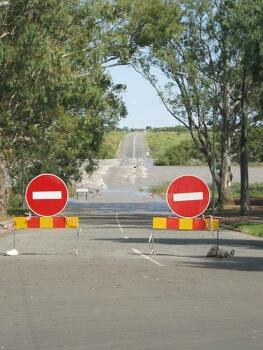The Future of Aid for Trade – a dialogue (en)
"The Future of Aid for Trade" was the subject of a dialogue hosted last week by the WTO and organized by ICTSD and the Ministry of Foreign Affairs, Finland. Here are some of the key findings from presentations over the 1.5 day proceedings.
There was general consensus that Aid for Trade (AfT) is broadly defined as "aid that a country considers to be trade related"
Supporting LDCs to plug into Global Value Chains
The first panel discussed the opportunities for LDCs to "plug" into Global Value Chains (GVCs - the new buzzword in AfT) and deliberated over how AfT could support that process. Peter Draper described AfT as working both at the "horizontal" and "vertical" levels.
At the horizontal level, AfT means investing in infrastructure as well as strengthening policy certainty. LDCs are confronted by these challenges in both areas, facing very high transaction costs in getting goods to market and weak governance that deters multinational investors.
|
Improved infrastructure - an AfT priority Credit: David.Beadle, Flickr |
At the vertical level, Draper argued that AfT should support sectors in the value chain to strengthen skills and reduce information asymmetries. He remarked that there were key roles for trade and investment promotion support. Reviewing the performance of AfT The afternoon session reviewed aid performance with two studies presented by ODI and ICTSD respectively. Areas of weakness in AfT performance revolved around three issues:
In terms of positive outcomes in AfT, the OECD's Frans Lammersen spoke of how AfT had been successful in mainstreaming trade into the development agenda - meaning that trade was now more fully recognized for its key role in delivering poverty reduction and growth. |
Additionality and sustainability - an example from agriculture
Sustainability
Jodie Keane from ODI recounted how in the 1990s retailers from the UK and Netherlands imposed certification requirements on imported fresh produce. This was a result of vertical integration (increasing buyer power) and a need by retailers to show "due diligence" on food safety to regulators. Donors were concerned that smallholders supplying exporters would be shut out of markets and thus funded programmes to pay for training and certification costs. However, research such as that from Andrew Graffham at NRI proved that these costs could not be sustained once the programmes closed. As a result, donors now focus resources on technical training of companies and strengthening of trade associations to be able to negotiate more effectively with buyers. Experience thus suggests that aid programmes should not fully fund certification costs. The focus instead is now on reducing transaction costs as opposed to compliance costs of trade.
Additionality
Related to this is the issue of lack of "additionality," i.e. would the exporters have paid for an exporters' certification if the project had not done so on its behalf? Offering money to companies to cover their certification costs is subject to information asymmetry risks i.e. how does the project know if the recipient would have paid for the certification anyway if without the donor support?
Feedback loops
One important message from the meeting was that feedback loops are an essential element in the aid business for improving project design. Strong baselines and evaluation methodologies are also critical. But as Prof. Olivier Cadot pointed out, heavy requirements for evidence can lead to too much conservatism in project design. Project managers should be allowed to take risks. Increased rewards come at the price of higher failure rates. However, these have an intrinsic value if we are not afraid to share experience and learn quickly from them. Another interesting observation was offered by Sumana Hussain of the UK's DFID who pointed out that small projects can have a large impact.
What about environment and AfT?
Environment was not on the agenda. I offered input as a way to focus dialogue around this topic in the near future. When thinking about how environment can be mainstreamed into the AfT agenda, there are three ways to conceptualize the interface between environment and trade:
- The environment is a market opportunity e.g. certified food and timber products, environmental services
- There are environmental impacts resulting from trade and these need mitigating (e.g. biodiversity losses from commodity production)
- The environment (i.e. Climate change) is having an impact on trade flows due to changes in productive capacity





